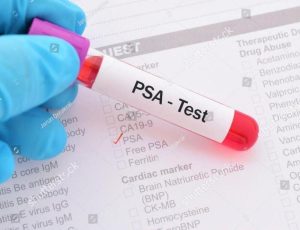
PSA stands for Prostate-Specific Antigen. PSA is produced by all of the cells in the prostate gland. It doesn’t matter whether the cells are normal or cancerous. They all produce PSA. Malignant cells, however, leak roughly ten times as much PSA into the bloodstream than normal cells. Since the prostate generally increases in size as men age, the PSA levels will also increase as one gets older.
Many urologists believe that biopsies should be performed on any male who has a PSA level of 4.0 ng/ml or higher. However, according to Dr. David Williams of Alternatives, the following are the maximum PSA levels that most men should have. If most urologists followed these guidelines, there would be far fewer biopsies:
40-49 years of age 2.5 ng/ml
50-59 years of age 3.5 ng/ml
60-69 years of age 5.0 ng/ml
70-79 years of age 6.5 ng/ml
Since PSA testing began, the apparent incidence of prostate cancer has doubled in the United States. It’s not that the cancer rate is increasing, it’s just that we are detecting more cancer. But better detection has not resulted in more cures. The mortality rate among prostate patients has not decreased at all. And small elevations in PSA levels have become a gold mine for urologists, resulting in thousands of unnecessary biopsies and treatment programs each year.
I recently became aware of a scheme by the medical establishment to increase the number of prostate patients in their care. It appears they have changed the “normal” ranges of the PSA test, thereby requiring many more men to have biopsies.
Note: Biopsies spread infected cells throughout the body, thus “lighting up” future PSA tests and increasing the chances of spreading. A much less invasive and more accurate test would be the AMAS (Anti-Malignan Antibody in Serum) blood test. It detects cancer early anywhere in the body with a 95& accuracy but does not detect where the cancer lies.
There is a very small percentage of false positives (approx 1&) but never any false negatives. So if you get a Negative result, you can skip all the invasive testing, including PET scans, MRIs, biopsies, etc.
Read more about normal PSA levels here: https://altmedangel.com/pub/cancer-psa1.html
AMAS Test Details: https://www.knowcancer.com/cancer-tests-diagnosis/amas-test
